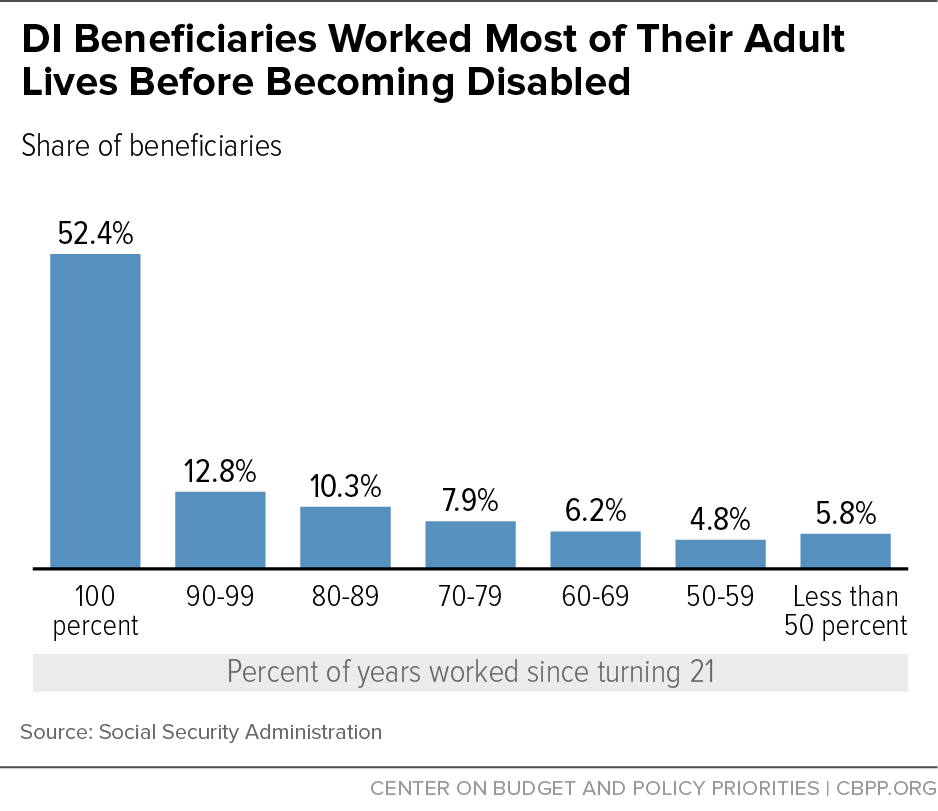BEYOND THE NUMBERS
The large majority of Social Security Disability Insurance (DI) beneficiaries have extensive work histories, new research from the Social Security Administration (SSA) shows.
To qualify for DI, workers must not only prove that they have a severe enough impairment that they can’t support themselves and their families; they must also have a solid work history. Federal law requires that DI beneficiaries worked at least one-fourth of their adult lives and at least five of the last ten years.
Most DI beneficiaries have worked much more than the law requires, SSA found. Over half worked every year from age 21 until becoming disabled; three-quarters worked at least 80 percent of those years (see chart). The average DI beneficiary has 22 years of work experience. Older beneficiaries — those disabled at age 50 or later — average more than 30 years of work.
DI beneficiaries also have strong earnings histories. A typical beneficiary earned middle-class wages before becoming disabled, earning the equivalent of $42,000 during his or her top five pre-disability years — close to the national average of about $47,000.
When workers become disabled, their incomes plummet, even if they are in the minority of applicants who qualify for DI benefits. DI replaces just a fraction of a worker’s lost earnings, providing less than $14,000 a year, on average — a little over the poverty line. These benefits, though modest, provide a lifeline to workers who have worked hard to earn disability protection and can no longer support themselves through work.

